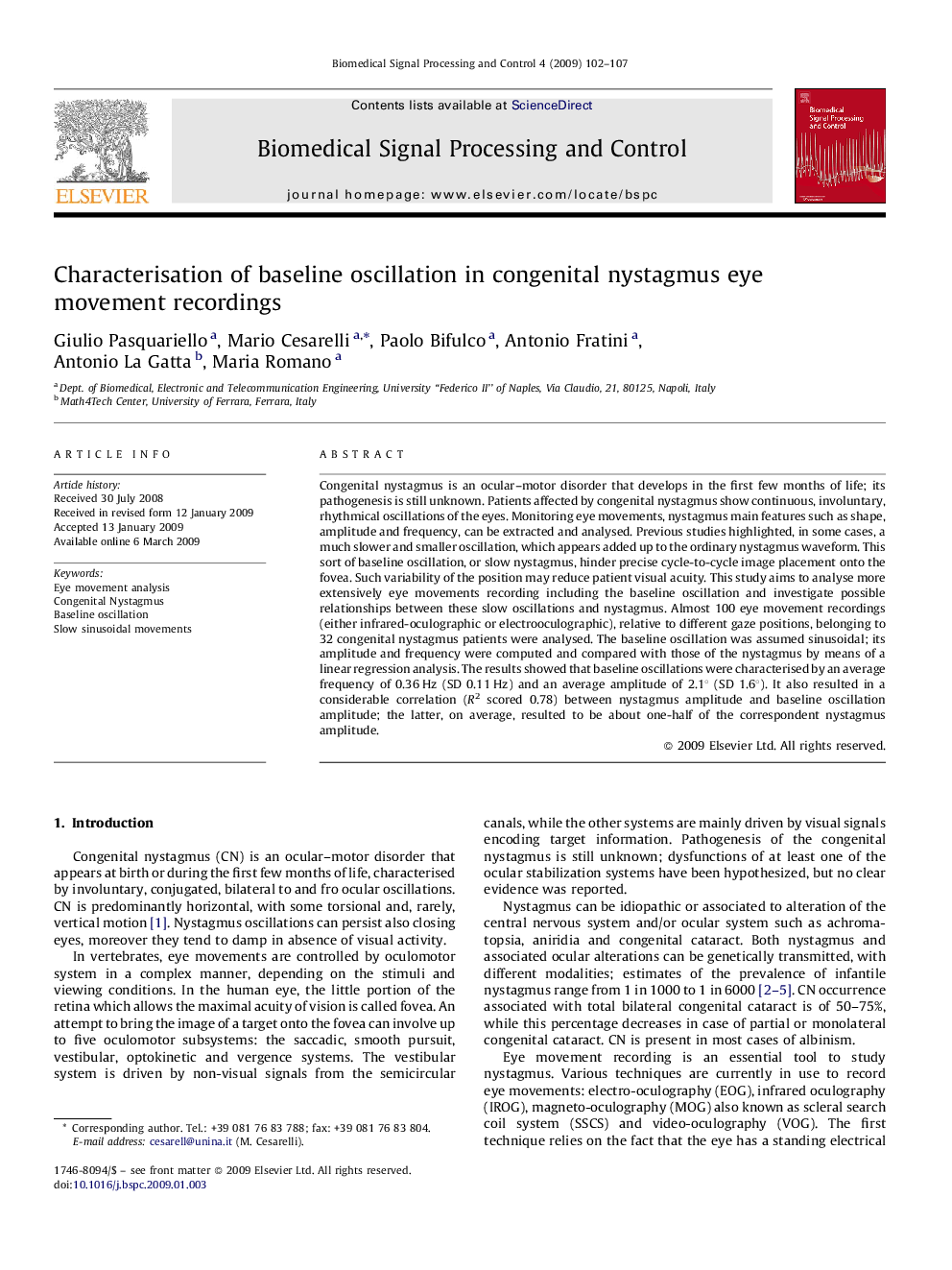| Article ID | Journal | Published Year | Pages | File Type |
|---|---|---|---|---|
| 558263 | Biomedical Signal Processing and Control | 2009 | 6 Pages |
Congenital nystagmus is an ocular–motor disorder that develops in the first few months of life; its pathogenesis is still unknown. Patients affected by congenital nystagmus show continuous, involuntary, rhythmical oscillations of the eyes. Monitoring eye movements, nystagmus main features such as shape, amplitude and frequency, can be extracted and analysed. Previous studies highlighted, in some cases, a much slower and smaller oscillation, which appears added up to the ordinary nystagmus waveform. This sort of baseline oscillation, or slow nystagmus, hinder precise cycle-to-cycle image placement onto the fovea. Such variability of the position may reduce patient visual acuity. This study aims to analyse more extensively eye movements recording including the baseline oscillation and investigate possible relationships between these slow oscillations and nystagmus. Almost 100 eye movement recordings (either infrared-oculographic or electrooculographic), relative to different gaze positions, belonging to 32 congenital nystagmus patients were analysed. The baseline oscillation was assumed sinusoidal; its amplitude and frequency were computed and compared with those of the nystagmus by means of a linear regression analysis. The results showed that baseline oscillations were characterised by an average frequency of 0.36 Hz (SD 0.11 Hz) and an average amplitude of 2.1° (SD 1.6°). It also resulted in a considerable correlation (R2 scored 0.78) between nystagmus amplitude and baseline oscillation amplitude; the latter, on average, resulted to be about one-half of the correspondent nystagmus amplitude.
